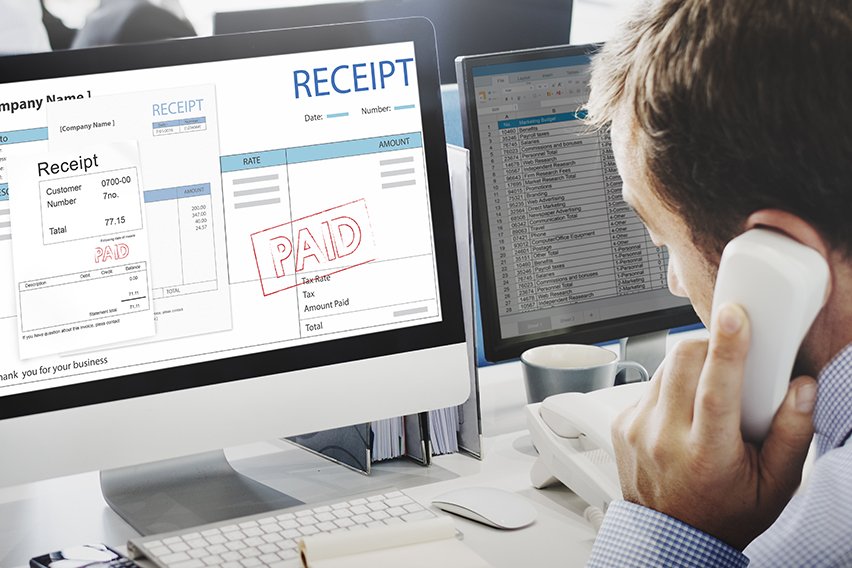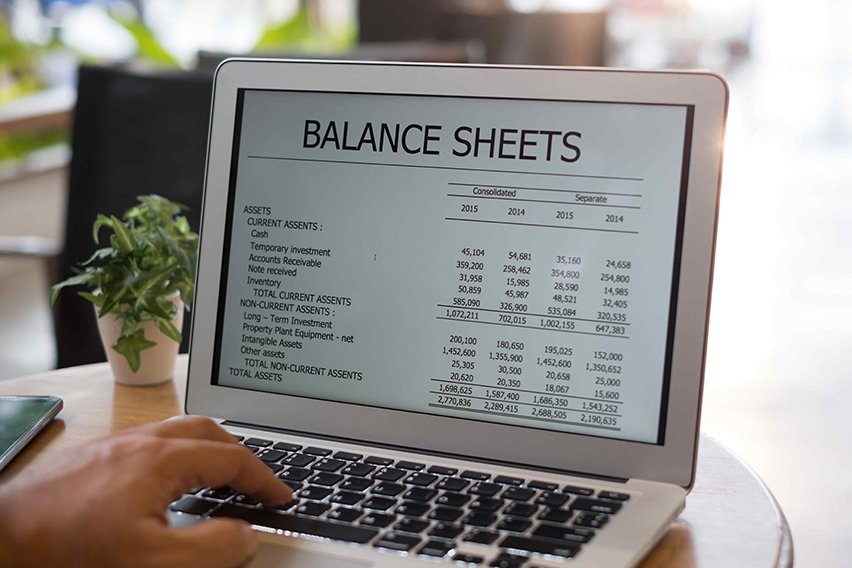Debit Memo: Definition, Elements & Types

Have you ever heard of a debit memorandum? Maybe you have seen one before in one of your bank statements, such as for your checking account. These can be common with many types of bank transactions.
So how exactly do debit memos work and what do you need to know? The good news is we put together this guide to cover the most important pieces of information. Keep reading to learn more.
Table of Contents
- What Is a Debit Memorandum?
- How Does a Debit Memo Work?
- Elements to Include in a Debit Memo
- Types of Debit Memos
- When to Create a Debit Memo?
- Debit Memorandum Vs. Credit Memorandum
- Key Takeaways
- Frequently Asked Questions
What Is a Debit Memorandum?
A debit memorandum is a specific type of notice that a client would receive if their account balance happens to decrease. The notice gets sent out so the client can then rectify the situation. Debit memorandums are also commonly referred to as a debit memo or a debit note.
If your account balance goes lower than it should, the debit memo entry will inform you that an adjustment needs to get made. Debit memos are typical and common within the banking and financial industries. For example, when a bank charges a fee, it will often issue a debit memo to the specific bank account in question.
When this happens, the fees work as more of an adjustment instead of a specific transaction. Then, it gets debited from your account and is then recorded as a debit memo. In some cases, debit memos can get used to help rectify inaccurate account balances.
Some of the most common types of debit memos include:
- Equipment rental fees
- Interest fees
- Insufficient funds fees
- Returned check fees
- Check printing fees
- Corrections needed due to an improper deposit
How Does a Debit Memo Work?
You have most likely had certain fees charged to your bank account at some point or another. It could be for any number of reasons, but they can sometimes get taken out automatically. When this happens, a debit memorandum gets noted on your bank statement. This is so you know exactly what has happened and why it has occurred.
For example, let’s say that your bank account currently has $5,000 in it. Because it’s a checking account, you might get charged $20 per month as a service fee. This amount gets deducted from your total account balance. In this case, your new balance would be $4,980. When this happens, your account will include a debit memo that notes the deduction amount.
On top of a monthly account service fee, you might also see a debit memo occur due to a printed or bounced check, for example. As well, it can be fairly common for debit memorandums to get used within the double-entry accounting system. This helps to indicate when adjustments get made and it will end up increasing the total amount due.
For example, let’s say you happened to make a purchase for something that totaled $1,000. However, a few months later the same item increased in price by $150. A debit memo would then get issued to the supplier for that extra cost and would get added to their accounts receivable. On the flip side, you would add that extra $150 to your own accounts payable.
Elements to Include in a Debit Memo
A commercial seller, buyer, or financial institution may notify of a debit placed on a recipient’s account. They do this in the sender’s books by sending a debit note. It can also get known as a debit memo or memorandum.
Yet, regardless of the reason, there are some specific elements to include in every debit memo. These can include the likes of:
- The item description and the total quantity
- The tax details of both the seller and the buyer
- The total price per unit, both before and after tax
- The total price, both before and after tax
- The date and specific reference number of the original invoice that got issued
- The date and specific reference number of the original debit note
- Specific details surrounding any sales, billing, or delivery documents
- A breakdown of the payment terms and conditions
- The specific reason that the debit note got issued in the first place, breaking down what’s owed and why it’s owed in the first place
Types of Debit Memos
There can be a few different types of debit memos depending on the situation and the industry. For example, they can be common in retail banking, to fix a billing error, or to offset credit. Keep reading for a further breakdown of some of the most common types of debit memos.
Debit Memos on Bank Statements
When an account balance gets reduced for a cause other than a cash withdrawal a debit memorandum is given to the account holder in retail banking. Debit memos may result from bank service fees, fines for returned checks, or fees for printing additional checks. The debit memo gets indicated by a minus sign next to the charge, and it is typically sent to bank customers with their monthly bank statements.
Debit Memos as Internal Offsets
A credit balance that exists in a customer account can be offset within a company by creating a debit memo. The business may decide to send out a debit memo to cancel the credit and remove the positive balance if a customer pays more than the invoiced amount. If the credit balance is significant, the business would probably refund the customer rather than generate a debit memo.
Debit Memos in Incremental Billings
When a customer is accidentally undercharged for goods or services provided, a debit memo gets issued. It’s done as an adjustment procedure in business-to-business transactions. It’s meant to fix a billing mistake. In formal terms, it is informing a client that their accounts payable will rise as a result of the debit memo.
If a company completes an order and invoices the client for less than the agreed amount, they send a debit memo to indicate and detail the balance.
When to Create a Debit Memo
To show a charge for something that isn’t a typical invoice item, you can create a debit memo. Frequently, changes or modifications to earlier transactions are included in debit memos.
Some of the most common reasons that debit memos get created include:
- Enter the tax amount from the initial invoice or a price adjustment for a line item.
- Add a necessary charge that was left off of the initial invoice, like freight.
- To record the net amount of a successful debit and credit transaction, you can create a debit memo reversal.
- If you decide to record late fees as debit memos, you can create a single debit memo for each transaction that’s overdue. Any fines and late payment fees are then going to have separate line items.
Debit Memorandum Vs. Credit Memorandum
Both a debit memo and a credit memo inform clients of a change in their account status. Customers (or buyers) are informed by a debit memo as to why their account balance has decreased or why they now owe more. They record alterations that raise an account balance.
Here is a further breakdown of when a debit memo and a credit memo get used:
Debit memorandums are used when:
- An adjustment reduces the total account balance in banking
- The amount that a buyer owes a seller increases in an invoice
- The buyer has to remit payment
- A seller debits their accounts receivable and a buyer records the transaction in their accounts payable as a reduction
Credit memorandums are used when:
- An account balance increases and there needs to be a notification
- The amount a buyer owes a seller is reduced
- A buyer chooses to offset some future purchases with credit
- A seller has a reduction in their accounts receivable balance and a customer sees a reduction in their accounts payable
Key Takeaways
A particular kind of notice that a customer would get if their account balance dropped gets called a debit memorandum. In order for the client to correct the situation, the notice gets delivered. Also known as a debit memo or a debit note, debit memorandums are commonly used in financial transactions.
They can also get used for incremental billing and internal offsets. No matter what the memo gets used for, there are a few elements that should always get included. These include tax details, descriptions, total price, reference numbers, and payment terms.

FAQs on Debit Memo
Is a debit memo positive or negative?
A debit memo is a negative amount invoice. It gets created and then sent off to a supplier that also includes a note that explains what it’s for.
Who sends a debit memo?
Typically, a debit memo gets issued by a seller to a buyer. It notifies them that there are certain debt obligations to consider. It can be most common in many business-to-business transactions.
Is a debit memo a refund?
Not necessarily. In many cases, debit memos get issued due to damaged or incorrect goods or a purchase cancellation, for example.
Can you dispute a debit memo?
Yes, you can dispute a debit memo. You’re going to need to respond within 30 calendar days of receiving the memo. When you dispute it, you will need to address the actual issue that was raised in the first place and why you consider it to be invalid.
RELATED ARTICLES


 What Is a Good Current Ratio?
What Is a Good Current Ratio? How to Calculate Markup & Markup Percentage?
How to Calculate Markup & Markup Percentage? Formula for Margin of Error: How To Calculate in Easy Steps
Formula for Margin of Error: How To Calculate in Easy Steps 6 Best Accounts Receivable Software for 2025
6 Best Accounts Receivable Software for 2025 What Is an Unclassified Balance Sheet?
What Is an Unclassified Balance Sheet? What is Negative Cash Flow & How to Manage It?
What is Negative Cash Flow & How to Manage It?